ScanViS
The Magic Behind MWC19 Facial Recognition Access
- Details
- Written by Super User
- Category: Video
- Hits: 741
- Youtube Link: jBJSeoTcg8Y
- Thumbnail:

Introduction to Biometric Access Control – More than Controlling a Door
- Details
- Written by esther.kwong
- Category: FAQ
- Hits: 3314
- Thumbnail:

- Description: The advantages of biometric access control are pushing the technology forward swiftly, with pressing concern over hygiene after COVID-19. How does biometric access control work? Is the solution scalable for enterprises? Here are some points explaining why it becomes the trend in more and more industries.
- News Icon: Hide
Introduction to Biometric Access Control – More than Controlling a Door
The advantages of biometric access control are pushing the technology forward swiftly, with pressing concern over hygiene after COVID-19. How does biometric access control work? Is the solution scalable for enterprises? Here are some points explaining why it becomes the trend in more and more industries.
Frequently Asked Questions
1. What is biometric access control?
Biometric access control is a technology that gathers a specific type of biometric data such as face, fingerprint, veins from a person to control security entry.
2. Why biometric access control?
Biometrics security enables a touch-free check-in experience, especially with facial recognition technology. By reducing the surface touchpoints of doors and entrances, the use of a contactless entry system could address the emerging COVID-19 safety and health concerns.
Adding biometrics as a layer of multi-factor authentication (MFA) not only results in stronger security to prevent identity frauds but also mitigates the risk of disease transmission through unnecessary touchpoints.
Key benefits of using biometrics access control:
3. How are the entrances controlled?
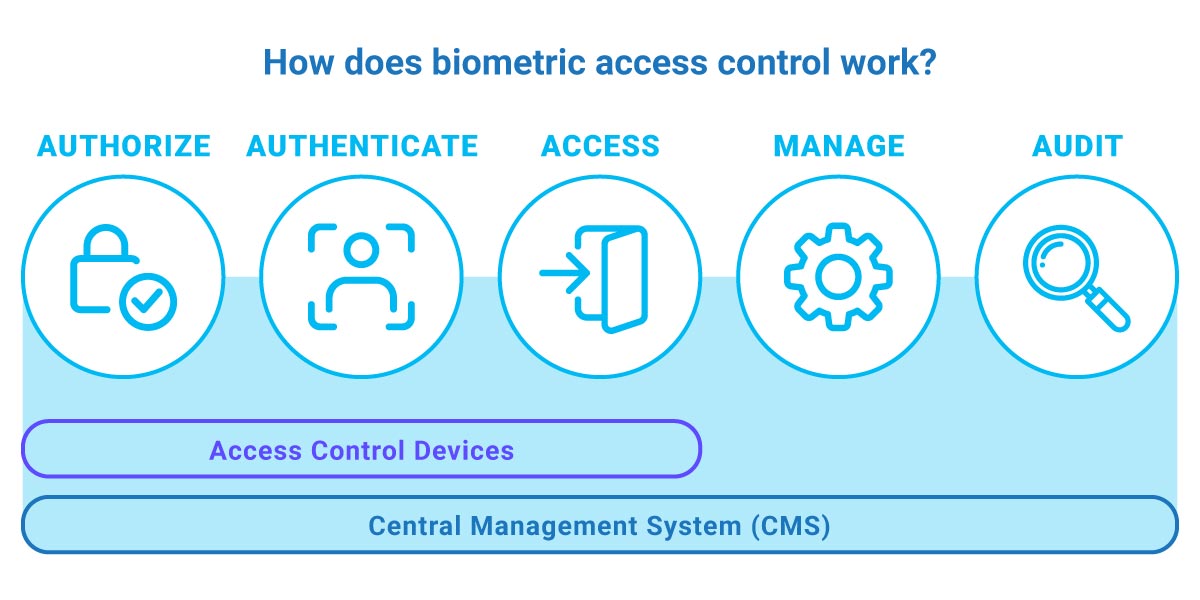
By defining who has access to which entrance(s), the first step is to authorize user groups. Role-based access control (RBAC) can be deployed for different levels of physical access.
With access control devices installed at entry points, users will check in by presenting credentials or biometric characteristics. The device will validate the user’s identity and trigger access to authorized personnel.
After authentication, the specific entrance will be unlocked to the authorized user. All access logs will be stored in the access control system.
Next, security personnel can manage the access control with the central management system (CMS). The CMS can manage a variety of functions including add/remove ID groups, set access criteria, control access time, generate access log reports, real-time alerts, and more.
Organizations can perform regular audits to keep track of all access events. Analyzing physical access control data is useful for businesses to meet security requirements..
4. What else can an access control system do apart from control a door?
Access control systems are versatile which allow flexibility to integrate with hardware and software. Entry points are not limited to doors, access control devices can integrate to gates, elevators, event sign-in systems, and more.
By combining an access control system with temperature detection function, fever screening can be performed on visitors before entering the premises or venues. Besides, access control systems can also allow automated attendance tracking, facilitating payroll arrangement when employing with the HR systems. There are many possibilities with the modern access control systems, giving more cost-effective solutions to small to large deployments. Nowadays, enterprises have many options to upgrade their access control system with ease.
Continue reading:
Returning to Normal with Accurate Fever Detection
- Details
- Written by esther.kwong
- Category: FAQ
- Hits: 3964
- Thumbnail:
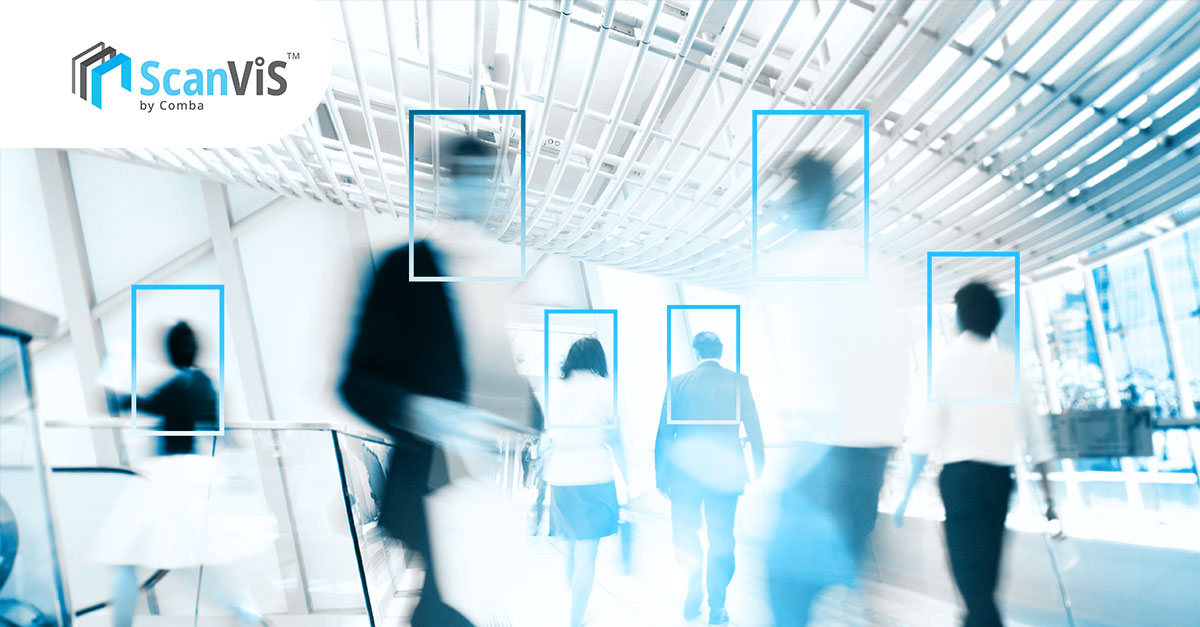
- Description: When government and business leaders start talking about “returning to normal,” how and whether ScanViS thermal detection devices can help provide a safer workplace? We've put together some commonly asked questions to give you more information about accurate fever detection.
- News Icon: Hide
Returning to Normal with Accurate Fever Detection
When government and business leaders start talking about “returning to normal,” how and whether ScanViS thermal detection devices can help provide a safer workplace?
Frequently Asked Questions
- 1. What is the best fever detection method for enterprises and organizations?
- 2. How do I get notified if someone passes or fails?
- 3. Does ScanViS thermal detection series allow parameters setting based on business’s safety protocols?
- 4. Who is in charge of keeping track of the temperatures taken?
- 5. Is it possible to integrate the existing employee database (e.g. face image) with ScanViS thermal detection devices?
- 6. Where should I set up the thermal detection device, and what if I have more than one entry point?
- 7. What is the connectivity and installation of the device?
- 8. Is there any other feature ScanViS thermal detection devices offer?
1. What is the best fever detection method for enterprises and organizations?
Ans: Some organizations use handheld thermal scanners as a short-term measurement for temperature screening, but temperature accuracy might be affected by human errors. When it comes to high-volume area or peak hours such as morning check-in hours in office building, bottleneck may occur to increase potential risk in disease spreading.
When body temperature screening becomes a long-term implementation in workplace, permanent installations would be a better option. ScanViS thermal detection devices can screen the face of a moving person, while artificial intelligence software would single out individuals with high temperatures and alert administrator. This higher degree of granularity improves insight, allowing for a more efficient and faster screening process.
2. How do I get notified if someone passes or fails?
Ans: The thermal detection devices perform body temperature scanning on forehead or wrist in 1-2 seconds, access will be granted to those detected with normal temperature by unlocking the door or gate at the entry point. Or else, access will be denied to the person with elevated body temperature, and instant alert will be sent to office admin or receptionist to retest the person.
3. Does ScanViS thermal detection series allow parameters setting based on business’s safety protocols?
Ans: Yes. Organizations are able to set parameters on the thermal detection devices, such as normal or abnormal temperature range (for reference, adult body temperatures between 97°F/36°C to 99°F/37°C and children between 97.9°F/36.6°C to 100.4°F/38°C), mask detection, entry permission date and time, etc.
4. Who is in charge of keeping track of the temperatures taken?
Ans: ScanViS thermal detection devices send its data to an authorized administrator. This administrator could either be the person at the front of the building, e.g. receptionist, or someone in charge of attendance taking, visitor management, or office access, e.g. HR/Admin manager.
5. Is it possible to integrate the existing employee database (e.g. face image) with ScanViS thermal detection devices?
Ans: Yes. Suppose the existing database for time-clock purposes include employee information (e.g. name, picture, or employee ID), ScanViS devices can cross-pollinate between customized applications, helping identify current employees at the building from visitors or guests.
6. Where should I set up the thermal detection device, and what if I have more than one entry point?
Ans: It depends on the specific business or organization for the daily traffic flow and the number of people entering the doors or gates. For workplaces with high visitor or employee traffic, ScanViS thermal detection devices would be ideal for multi-entry deployment and remote office entry management. All these devices can be managed by ScanViS WinCMS, a central management system to monitor and control all ScanViS devices from a single location.
7. What is the connectivity and installation of the device?
Ans: ScanViS thermal detection devices offer either ethernet-direct plug-ins or are Wi-Fi accessible. Some offer both. By having a good wireless or wired connection on your network, this could ensure real-time data sharing to the central management system or local server for multi-entry deployment.
8. Is there any other feature ScanViS thermal detection devices offer?
Ans: Yes. The devices also offer access control solution including multi-authentication (i.e. face, QR code, MiFare card, passcode) for entry authorization, access log for attendance recording, and visitor management.
MWC Barcelona 2021
- Details
- Written by esther.kwong
- Category: Others
- Hits: 2519
Touchless Access Control Solution
With ScanViS GateGuard PRO
——
Selected by GSMA – the global mobile industry event organizer, ScanViS has successfully deployed a fast and efficient event check-in system using a safe and reliable facial recognition technology to enhance the attendees onsite experience during MWC Barcelona 2021 (28 Jun - 1 Jul, 2021) .
MWC Barcelona 2021
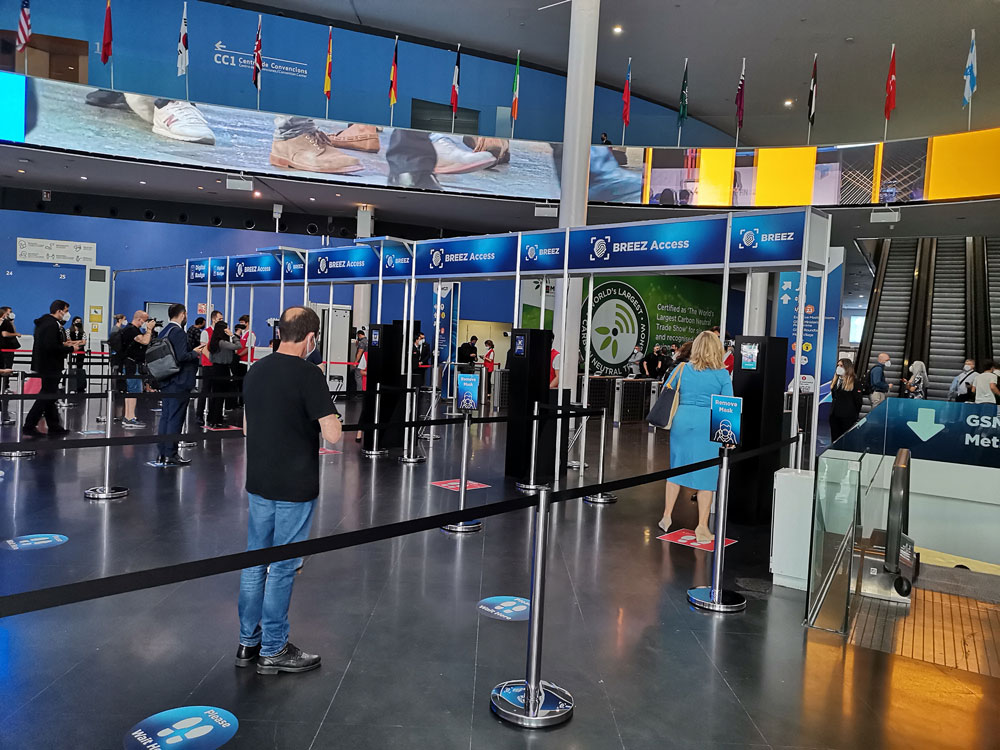 |
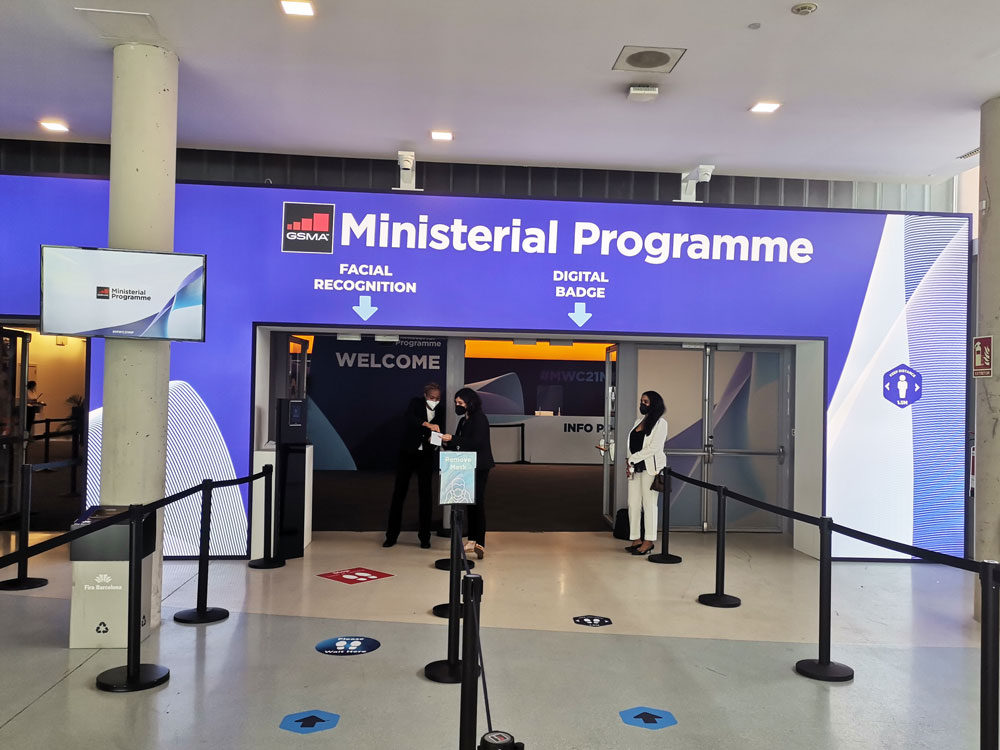 |
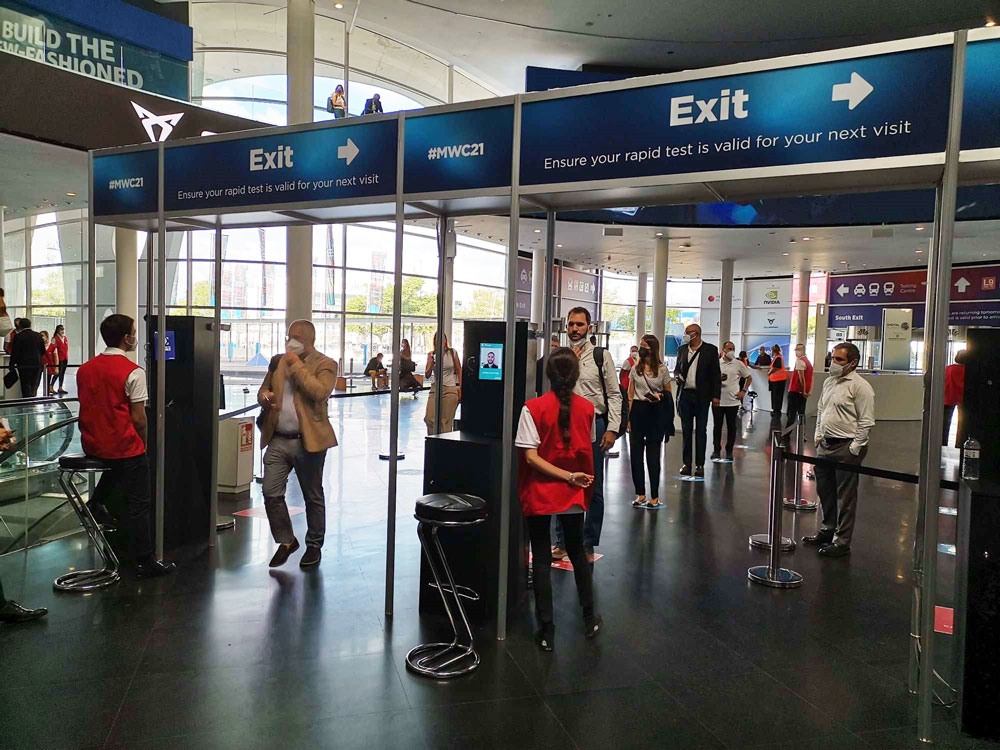 |
News
How ScanViS Works (Interview Featured in MWC21 Official Newspaper)
As MWC21 prepares to make a comeback following the start of the Covid-19 pandemic, implementing healthy, hygienic measures has never been so important. Ken Li, Senior Solutions Manager – New Solution, Comba Telecom, outlines how touchless and face-ID technology can play a crucial role in creating a safe environment for attendees.
MWC Barcelona 2021 Touchless Access Control Solution - BREEZ
GSMA looked for frictionless and secure venue access to improve attendees’ entry experience at Mobile World Congress 2021 in Barcelona. The GSMA created the BREEZ experience to provide an end-to-end secure registration and access solution with ScanViS. ScanViS has deployed faster identity checks and seamless venue access, hands-free, hygienic experience for attendees.
Resources and Downloads
Page 16 of 16

